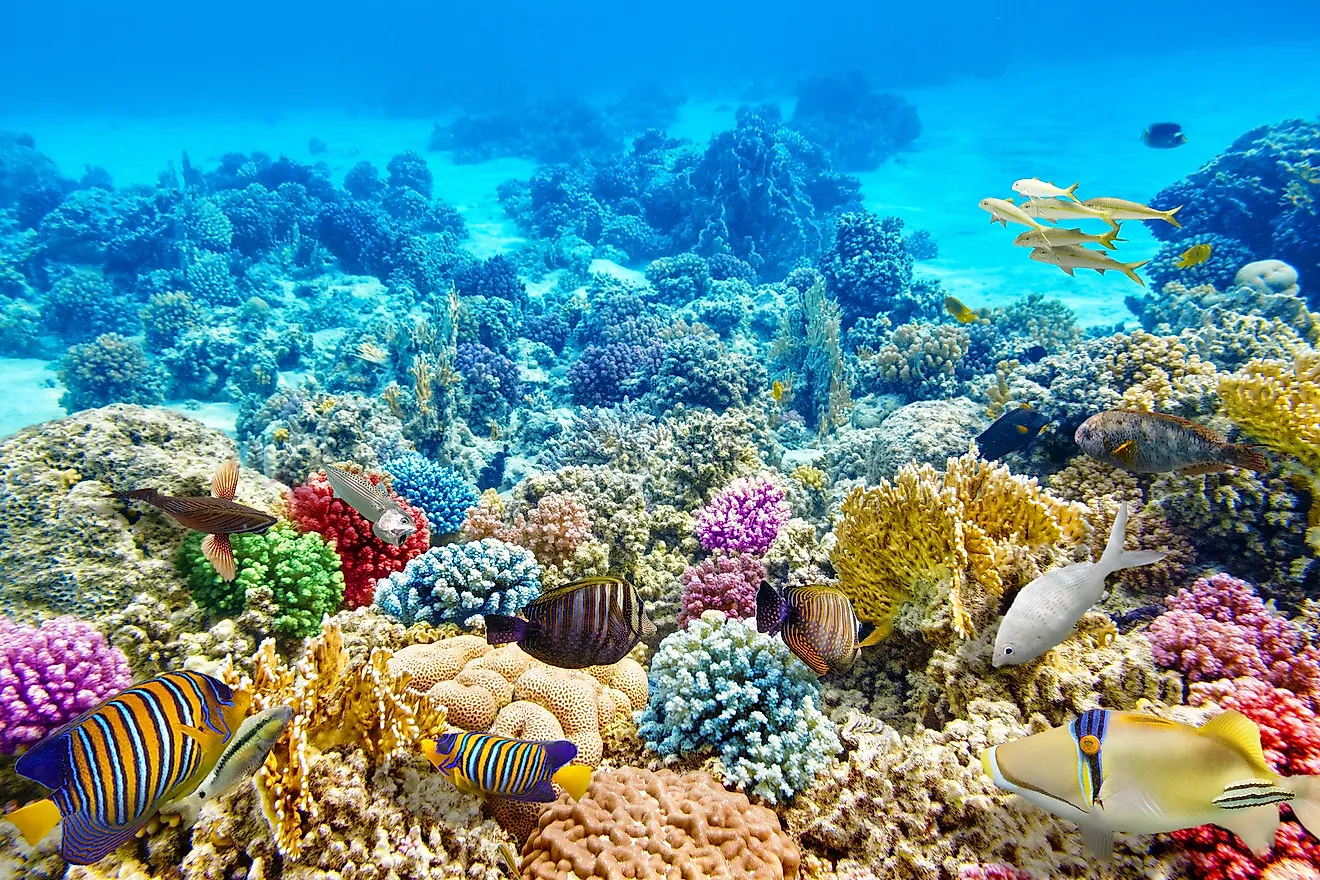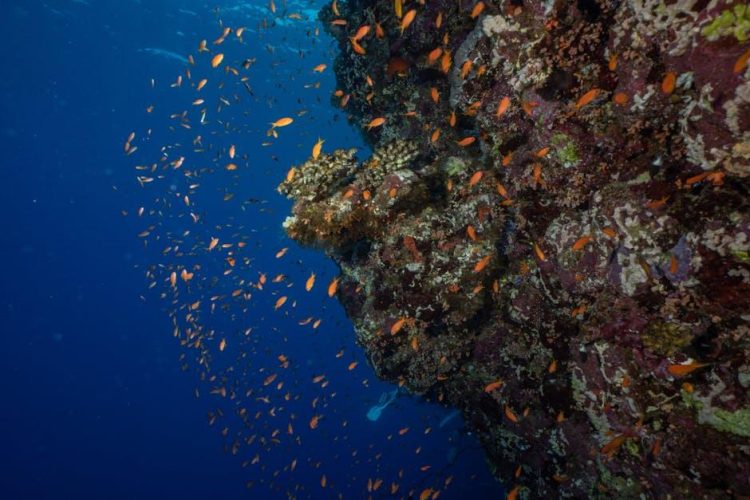Step aside, Nemo! We’re diving deep into the murky waters of climate change and its effects on the most vibrant and vulnerable ecosystems in the sea – coral reefs. Get ready to be schooled on how our planet’s thermostat adjustment is wreaking havoc on these underwater neighborhoods, from coral bleaching to ocean acidification. So grab your snorkel, strap on your flippers, and let’s see how the coral reefs are holding up in this underwater climate crisis.
Overview of Coral Reefs and Climate Change
So you think coral reefs are just these pretty underwater gardens that fish like to hang out in, right? Well, think again! These vibrant ecosystems are facing a serious threat from climate change.
Picture this: coral reefs are like the cool kids at the party, hosting a diverse array of marine life and providing crucial habitat for countless species. But as the planet warms up, these once thriving ecosystems are starting to feel the heat… literally! Rising ocean temperatures are causing coral bleaching, where the corals expel the algae living in their tissues, turning them ghostly white.
And that’s not all! Ocean acidification is also throwing a wrench in the coral reef party. As the oceans absorb more carbon dioxide from the atmosphere, the pH levels drop, making it harder for corals to build their calcium carbonate skeletons. It’s like trying to build a house with flimsy materials – not a good look for the corals!
So, next time you’re chilling on the beach, sipping a tropical drink, spare a thought for our underwater friends. Coral reefs may be out of sight, but they’re definitely not out of mind when it comes to climate change. It’s time to take action before these amazing ecosystems disappear faster than you can say “reef-tastic!”
Rising Sea Temperatures and Coral Bleaching
It’s no secret that rising sea temperatures are causing coral bleaching to become a major issue for our underwater friends. Just like humans, corals can’t handle the heat!
As the water heats up, corals expel the colorful algae living in their tissues, causing them to turn ghostly white. It’s like a bad sunburn, but on a massive scale!
So, what can we do to help our coral pals? Well, for starters, we can reduce our carbon footprint and stop pumping greenhouse gases into the atmosphere. Let’s give those corals a break, shall we?
Remember, a healthy ocean means a healthy planet. Let’s do our part to keep those sea temperatures in check and prevent any more coral bleaching disasters from happening. Our underwater buddies will thank us for it!

Acidification and its Effects on Coral Reefs
Coral reefs might seem like a tough bunch, but they have a sensitive side too! When it comes to acidification, these oceanic beauties can’t help but feel the burn. As CO2 levels rise in the atmosphere, more and more of it is absorbed by the ocean, leading to a decrease in pH levels. This acidic environment can wreak havoc on coral reefs, causing a host of negative effects.
So, what exactly happens when coral reefs get a taste of acidification? Let me break it down for you:
- Bleaching: Just like a bad dye job, acidic waters can cause coral reefs to lose their vibrant colors and turn white.
- Weakening: Acidification can weaken the skeletal structure of coral reefs, making them more susceptible to damage from storms and other environmental stressors.
- Algae Takeover: When coral reefs are stressed out from acidification, algae can swoop in and take over their territory, leading to a less biodiverse and vibrant ecosystem.
So, next time you’re sipping on a carbonated beverage, just remember that those bubbles could be having a not-so-fizzy impact on our beloved coral reefs. Let’s all do our part to reduce our carbon footprint and help these majestic underwater marvels thrive!

biodiversity-due-to-climate-change”>Loss of Biodiversity Due to Climate Change
Climate change is no joke, folks. Not only does it mess with our weather, but it’s also causing a serious loss of biodiversity. And let me tell you, it’s not just the cute and cuddly animals that are at risk. Nope, even the weirdest of creatures are feeling the heat. Take the blobfish, for example. This guy already looks like he’s melting, so you can imagine how climate change is making things even worse for him. Poor fella.
But it’s not just the blobfish who’s in trouble. Oh no, it’s a whole slew of critters who are being affected by this global warming nonsense. From the majestic polar bears to the elusive snow leopards, everyone is feeling the heat. And let’s not forget about the plants, too. Those poor little guys are wilting faster than you can say “photosynthesis.”
So what can we do to stop this loss of biodiversity? Well, for starters, we can all do our part to reduce our carbon footprint. That means driving less, using public transportation, and maybe even planting a tree or two. And hey, if you really want to go above and beyond, you could always become a vegan. That’s right, folks. Eating plants instead of animals might just be the key to saving our planet. Who knew?

Adaptation Strategies for Coral Reefs
So you’re a coral reef that’s feeling a little stressed out by all the climate change and human activity? Don’t worry, I’ve got you covered with some top-notch adaptation strategies!
First off, you might want to consider forming some symbiotic relationships with algae. These guys are like the personal trainers of the ocean, helping you stay healthy and resilient in the face of adversity. Plus, they give you that nice green glow that all the other reefs will envy.
Next, why not diversify your portfolio by attracting some different species to hang out with you? It’s like throwing a party and inviting all the cool kids from the neighborhood. Not only will you have a more diverse and vibrant community, but you’ll also be better equipped to handle whatever challenges come your way.
And finally, don’t forget to stay on top of your self-care routine. Make sure you’re getting enough nutrients, getting plenty of rest, and taking time to relax and de-stress. After all, a healthy and happy reef is a resilient reef!
Current Conservation Efforts and Challenges
One of the current conservation efforts is the push to protect endangered species such as the majestic albino dung beetle. These creatures may not be the most glamorous, but they play a vital role in maintaining the ecosystem’s balance. Unfortunately, their numbers have been dwindling due to habitat loss and illegal poaching for their prized ivory-like exoskeletons.
Another challenge we face is the rampant deforestation happening in the Amazon rainforest. It’s like a bad haircut that just won’t grow back! We need to come up with innovative solutions to combat this issue before we lose more precious tree species and the plants and animals that rely on them for survival.
Moreover, the rise of plastic pollution is a massive headache for conservationists. It’s like trying to clean up after a frat party – everywhere you look, there are plastic straws and bags clogging up our oceans and harming marine life. We need to step up our game and find ways to reduce single-use plastics and promote recycling and reuse.
In conclusion, the current conservation efforts are no walk in the park (unless that park happens to have a “Save the Endangered Species” fundraiser going on!). But with determination, creativity, and a dash of humor, we can overcome these challenges and make the world a better place for all living creatures – even the albino dung beetles!
Future Outlook for Coral Reefs Under Climate Change
In the face of climate change, coral reefs are facing an uncertain future. With rising ocean temperatures and increasing ocean acidity, these fragile ecosystems are under immense pressure. However, all hope is not lost! There are some possible scenarios that could shape the future outlook for coral reefs:
One potential outcome is that coral reefs develop superpowers and become resistant to the effects of climate change. Picture this: corals with capes, flying through the ocean and battling back against rising temperatures and acidity. With their newfound strength, they could adapt and thrive in even the harshest conditions.
Another possibility is that coral reefs become the next big fashion trend. Imagine a world where everyone is wearing coral reef-inspired clothing and accessories. From vibrant colors to intricate patterns, coral reefs could become the hottest new look. Who needs diamonds when you can have coral?
Alternatively, coral reefs could become the stars of their own reality TV show. Viewers from around the world could tune in to watch the drama unfold as corals navigate the challenges of climate change. From love triangles to epic battles, these underwater celebrities could capture our hearts and minds.
FAQs
What exactly is climate change doing to coral reefs?
Oh, climate change is like that annoying ex that just won’t leave coral reefs alone. It’s causing rising sea temperatures, ocean acidification, and more intense storms, all of which are wreaking havoc on our beloved coral reefs.
Are coral reefs really that important?
Well, let me put it this way – coral reefs are like the superheroes of the ocean. They support a diverse ecosystem, protect coastal communities from storms, and even provide us with life-saving medicines. So yeah, they’re kind of a big deal.
Can anything be done to save coral reefs from the impacts of climate change?
Absolutely! It’s not too late to turn this ship around. By reducing carbon emissions, creating marine protected areas, and supporting sustainable fishing practices, we can give coral reefs a fighting chance against climate change. Think of it as a coral reef intervention – they deserve our help!
How can individuals help in the fight to protect coral reefs?
Oh, so many ways! You can reduce your carbon footprint, use reef-safe sunscreen, support organizations that are working to protect coral reefs, and spread the word to raise awareness. Every little bit helps, so channel your inner coral crusader and get to work!
—
In Conclusion: Tread Lightly, Coral-ly!
Well folks, we’ve reached the end of our deep dive into the world of coral reefs and climate change. Remember, these vibrant ecosystems are counting on us to make sustainable choices and protect their delicate balance. So let’s all do our part to reduce our carbon footprint and keep our oceans coral-ly awesome!






